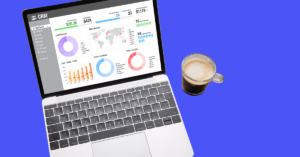Maximising the Impact of Cold Emailing: Best Practices for Sales Teams
Cold emailing can be a powerful tool for sales teams looking to expand their reach and generate new leads. However, with the rise of spam filters and inbox overload, it’s more important than ever to approach cold emailing strategically and thoughtfully. In this guide, we’ll share some best practices for maximising the impact of your cold emailing efforts. From crafting compelling subject lines to personalising your messaging and measuring your results, these tips can help you improve the effectiveness of your cold emailing campaigns and generate more high-quality leads for your sales team.
The top 5 methods for successful cold emailing
Craft a compelling subject line
Your subject line is the first thing that recipients will see in their inbox, so it’s essential to make it attention-grabbing and compelling. Use concise and clear language that communicates the value proposition of your email and entices the recipient to open it.
Personalise your messaging
Personalisation is key to successful cold emailing. Take the time to research the recipient and tailor your messaging to their specific needs and interests. Use their name, reference their company or recent news, and highlight how your product or service can help them achieve their goals.
Keep it concise and focused
Most recipients won’t have time to read a lengthy email, so it’s important to keep your message concise and focused. Use short paragraphs, bullet points, and clear language to communicate your message quickly and effectively.
Include a clear call-to-action
Every cold email should include a clear and specific call-to-action. This could be an invitation to schedule a call, download a resource, or sign up for a trial. Make it easy for the recipient to take the next step and provide clear instructions on what they need to do.
Measure and optimise your results
Regularly measuring and optimising your cold emailing campaigns is essential to improving their effectiveness over time. Look for metrics such as open rates, click-through rates, and conversion rates to understand what’s working and what’s not. Use this data to make data-driven decisions about how to improve your messaging, targeting, and overall approach.
Top Email Templates To Start Using Today
There are many different templates that sales professionals use for client prospecting, and the most effective ones can vary depending on the specific industry and target audience. Here are some common templates to get you started:
Introduction email
This is a template that sales professionals use to introduce themselves to a potential client. It typically includes a brief introduction of the salesperson and their company, as well as a clear statement of why they are reaching out to the prospect. The email should be short and to the point, with a clear call-to-action to schedule a call or meeting.
Referral email
A referral email is a template that sales professionals use when they are introduced to a potential client by someone they know. In this email, the salesperson can thank the referrer for making the introduction and explain how they can help the prospect with their specific needs.
Value proposition email
This is a template that sales professionals use to explain the unique value that their product or service can provide to the prospect. The email should highlight the benefits of the product or service, as well as any key features that differentiate it from competitors.
Follow-up email
A follow-up email is a template that sales professionals use to follow up with a prospect after an initial meeting or call. This email should include a recap of the previous conversation, as well as any next steps that were agreed upon. It’s important to keep the email concise and focused on moving the conversation forward.
Personalised email
A personalised email is a template that sales professionals use to tailor their messaging to the specific needs and interests of the prospect. This type of email requires research on the prospect’s business and industry, as well as an understanding of their pain points and challenges. The email should demonstrate the salesperson’s knowledge and expertise, and offer specific solutions to the prospect’s needs.
Overall, the key to effective prospecting templates is to keep the messaging clear, concise, and focused on the prospect’s needs and interests. Personalisation and research are also important to help build trust and establish a relationship with the prospect.
By implementing these methods, you can improve the effectiveness of your cold emailing campaigns and generate more high-quality leads for your sales team. Remember to focus on personalisation, conciseness, and providing clear value to the recipient, and to measure your results to continuously optimise your approach.
Wrapping Up
Power your B2B prospecting strategies and unlock more opportunities using our data!
With KnowFirst, you get:
- Fresh Data
- On-Demand Access
- Multiple Filters
- Historical Data
Whether it be people, marketing or company records, our data sets span more than 15 different categories, offering API and Platform users millions of data points.




